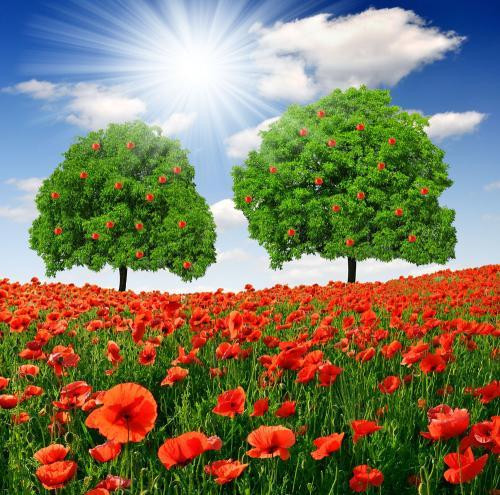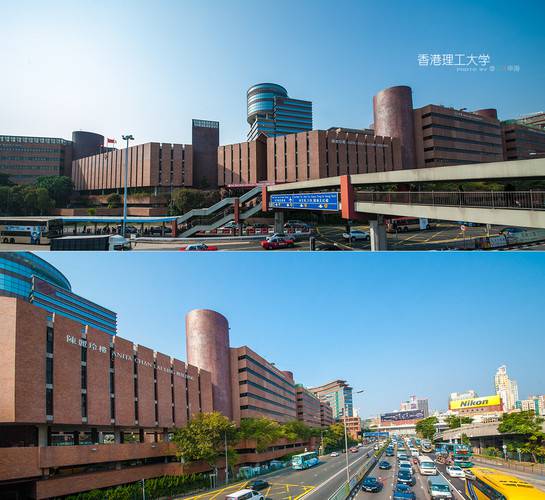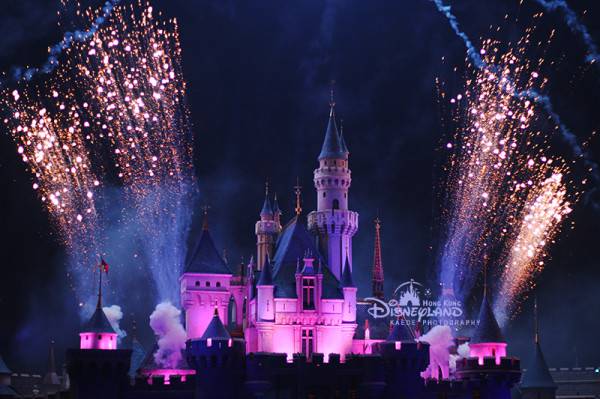A warm trip to Hong Kong on Christmas day in southern China
In winter, the sea breeze near Victoria Harbor in Hong Kong brings the warmth of the Pacific Ocean. On the snowy days in the north, only a thin coat is needed here. Although Hong Kong's history and culture are not long, they still have a kind of aloes. My stay in Hong Kong is not long, but I really enjoy the comfortable atmosphere here. Whether in Victoria Harbour, Kowloon Garden or the seascape of harbour city, there are different views everywhere. In the Hong Kong Polytechnic University, there are old men taking their granddaughter for a walk, lovers nestling together on the avenue of stars, and people seeing each other off on the subway platform
St. Rosa college is next to the staff quarters of Prince of Wales hospital where I stayed. This school is a missionary school. After getting permission, I entered it and took photos. The architectural style of the whole campus is very modern and the sense of lines is very strong. The students in it are very polite and specially invited me to watch their campus website. You are welcome to say that I still like the feeling of traditional Chinese characters.
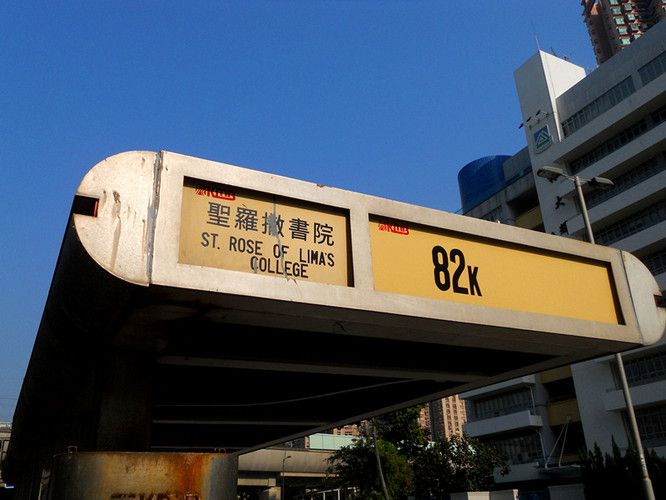
St. Rosa College
When I came out of the prince of Wales hospital where my friend worked, I saw a bus stop. I like the appearance of traditional Chinese characters very much. I was in a trance and had the flavor of old Shanghai. It seems that in my heart, I am still a nostalgic person.
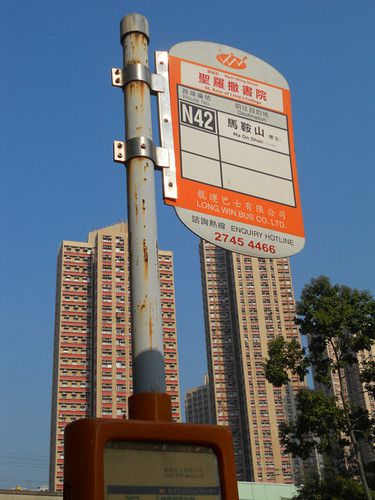
St. Rosa College
The bus stop sign is also an old style. The place name of Ma'anshan is a bright spot!! It's said that there is a good independent bookstore near here, but because of time, I have to miss it
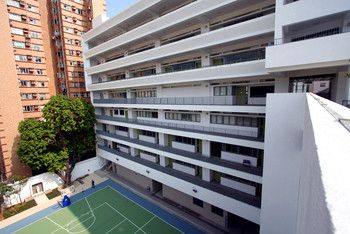
St. Rosa College
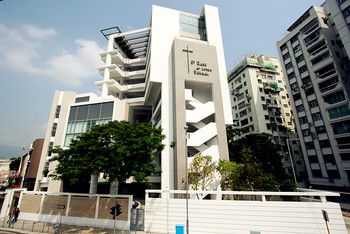
St. Rosa College
Harbour City Located in Tsim Sha Tsui, Kowloon, Hong Kong, it is not only the largest shopping mall in Hong Kong, but also one of the largest shopping malls in West Kowloon. It is not only a large building complex in Hong Kong, reaching Star Ferry Pier in Tsim Sha Tsui in the South and China Hong Kong City in the north, but also the largest shopping mall in Hong Kong. Therefore, it has become one of the tourist attractions. Seaport city can be divided into the following four shopping areas: shopping area ot: refers to the maritime building. From 2002 to 2004, it was renovated. Now it is divided into kid-x on the ground floor, sport-x on the second floor and LCX on the third floor, with children's products, sports products and young people's clothing. Shopping district HH: refers to Marco Polo Hong Kong Hotel shopping mall. Here is Lane Crawford's flagship store in Hong Kong, as well as the cinema. Shopping area OC: Ocean Center. The harbor city facing Guangdong Road has one of the most famous shops in the world: Louis Vuitton, Gucci, YSL, Prada, Chanel, etc. Form a famous shop street. Shopping area GW: refers to Gangwei shopping mall. Here are Jiahe Gangwei Movie City, restaurants, large supermarket C! Ty'super and ye Yitang bookstore.
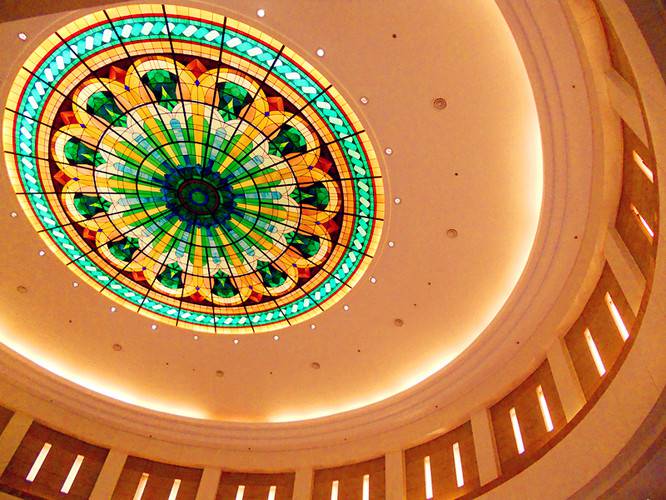
The painted glass on the top of the seaport city is very distinctive, and at first glance, it is also shocked.
Harbour City
As the largest shopping center in Hong Kong, the top design of the harbour city is somewhat similar to that of the Great Hall of the people. It suddenly occurred to me that the harbor city would invite some bands or performers to perform for the public in the performance area in the center of the hall every Saturday and Sunday, which is said to be a "music" in the This is the scene of the church members singing hymns in the center of the hall.
Harbour City
In the middle of the hall of the harbor city, a group of church members are singing hymns and Christmas songs. Finally, in the city at the end of this summer, they feel a strong Christmas atmosphere.
Harbour City
This is the Christmas tree placed in the center of the hall. The difference is that the main color has changed into blue and silver. Nevertheless, it is deep in my heart. After all, in this city which is still in the summer temperature at Christmas, the decoration of cold colors will make people feel a bit cool in winter, and also make the Christmas red more dazzling.
Victoria Harbour Harbour is a harbour between Hong Kong Island and Kowloon Peninsula in the Hong Kong Special Administrative Region. It is the first seaport in Asia and the third largest seaport in the world. Due to its wide width and deep water depth, Hong Kong is also known as "Pearl of the East", "three natural good ports in the world" and "three night scenes in the world". The name of Victoria Harbour comes from Queen Victoria of England. Free access throughout the year. In his early years, he was regarded by the British as having the potential to become an excellent port in East Asia. Later, he won Hong Kong from the Qing government and developed his maritime trade in the Far East. Victoria port has always influenced Hong Kong's history and culture, and led the development of Hong Kong's economy and tourism. It is one of the key factors for Hong Kong to become an international metropolis.
Victoria Harbor
At last, we arrived at Victoria Harbour. Due to the awesome weather, the water was also blue. The cable was perennial under the erosion of sea water and sea breeze.
Victoria Harbor
The night scene of Victoria Harbour is always a scenery that you can't miss after you come to Hong Kong.
Star Avenue is a promenade along the coast of Tsim Sha Tsui, Hong Kong. It is located between the southern end of Salisbury garden and the new world center. The Hong Kong Avenue of stars is modeled on Hollywood avenue of stars, built to praise the outstanding people in Hong Kong film industry. Themed on the history of Hong Kong's movie industry and the achievements of movie stars in front of the screen and movie workers behind the scenes, 73 movie celebrities' plaques are embedded on the floor of the avenue of fame, of which more than 30 have their fingerprints. At the entrance of the avenue, there are also bronze statues of the Gold Award and a small stage for performances. Along the road, there are snack booths, souvenir kiosks, some sculptures related to movies and rest seats. In addition, some star ambassadors wearing roller skates shuttle along the avenue to provide quick assistance and services for tourists. Walking along the avenue of stars, visitors can enjoy Hong Kong's famous Victoria Harbour scenery, the characteristic buildings along the Hong Kong Island and the new multi-media lighting and music performance of Hong Kong "colorful Hong Kong".
Avenue of Stars
This is the "golden statue" on the avenue of stars. As an enlarged version of the Hong Kong gold medal trophy, the sculpture is designed by the famous sculptor Liang Quan, and the goddess is modeled after Miss Zheng Wenya of Hong Kong. I should have taken a clear front photo, but I still seem to like silhouettes. The interesting thing about this sculpture is that there is a light bulb inside the small ball at the top, which will light up automatically at night.
Avenue of Stars
The Tsim Sha Tsui railway station of the Kowloon Canton Railway was built in 1913. Due to the fact that some of the equipment and installations ordered from the United Kingdom could not be delivered to Hong Kong on time due to the first World War, the internal works of the Tsim Sha Tsui railway station had to be shelved for a time. It was not until March 28, 1916 that Tsim Sha Tsui railway station was officially opened. The clock tower of Tsim Sha Tsui railway station was completed in 1915. Due to improper engineering arrangement, the one ton clock in the clock tower began to be installed in 1920 and began to operate in March 1921. The Kowloon Canton Railway Station was relocated to its current site in 1978, and the old Tsim Sha Tsui railway station was demolished, leaving only part of the clock tower. The clock tower was listed as a statutory monument in Hong Kong in 1990. Opening hours of the Former Kowloon Canton Railway clock tower in Tsim Sha Tsui: outside the clock tower: 24 hours a year; inside the clock tower: 10 am to 6 pm every Sunday
Clock Tower
The clock tower of the Kowloon Railway was built in 1915. When the Kowloon railway station was relocated in 1975, the clock tower was the only building left. The main body of the clock tower is made of red brick, with marble inlaid at its four corners, and a 7-meter-high lightning rod on the top.
Clock Tower
Facing Victoria Harbour, the bell tower used to be equipped with a large bronze bell. Every night, the sound of the big bronze bell can be heard for miles. Besides, the melodious "Victoria Harbour bell" in Qingyue was once a scene of Hong Kong. Now, after renovation and maintenance, the clock tower has been opened to tourists. Visitors can get on the top platform of the clock tower and enjoy the gorgeous scenery of Victoria Harbour through the exquisite diamond windows.
Clock Tower
Clock Tower
The bell tower itself and the surrounding lights are reflected in the pool. Suddenly, it seems to be similar to the Taj Mahal. Beside the pool, there are many adults and children enjoying the cool or playing, and some foreign friends taking photos here.
Clock Tower
The Hong Kong Cultural Centre is a modern performing arts centre, providing a wide range of Arts and cultural programmes for local people and overseas tourists. The completion and opening of the Hong Kong Cultural Center has opened a new page in Hong Kong's culture and arts. The Hong Kong Cultural Centre, designed by the Architectural Services Department, was founded in 1979 and started construction in 1984. It was opened in 1989. It is located in an advantageous position on the coast of Tsim Sha Tsui. With advanced equipment, it attracts a variety of first-class artistic performances, including concerts, operas, musicals, large-scale dances and dramas, experimental theatres and other performances. It is also a venue for film appreciation, entertainment and entertainment Ideal venue for conferences, exhibitions and other activities.
The sloping appearance makes it easy to identify the Hong Kong Cultural Center. Its biggest feature is "no windows", which means "the performance inside is judged by the audience". The former site of the Hong Kong Cultural Center is the Former Kowloon Canton Railway terminus. Although the station has disappeared, the clock tower built in 1915 next to it still remains today. This is the "first class historical building" in Hong Kong. Since 1921, the clock tower has been punctual every day.
The Hong Kong Polytechnic University Hong Kong Polytechnic University, abbreviated as "PolyU"), is a university with both vitality and remarkable history. The practical value of graduates from PolyU is regarded by employers as the highest among their peers. In pursuit of excellent academic standards, the university constantly brings forth new ideas, provides practical professional courses, training, applied research and professional consulting services, and supports the long-term development of industrial and commercial enterprises. PolyU is located adjacent to the Hung Hom Cross Harbour Tunnel, covering an area of 93500 square meters. The courses offered can meet the needs of the business community and the community. The University cultivates graduates with professional knowledge, independent thinking, good communication skills and broad vision. Students can be more flexible in choosing subjects and learning progress.
Hong Kong Polytechnic University
As a person majoring in science and engineering, I always feel very intimate when I see the word "science and Engineering". Therefore, I have to take a photo at the Hong Kong Polytechnic University as a souvenir.
Hong Kong Polytechnic University
This is the peripheral building of the Hong Kong Polytechnic University. Looking from the street, it feels like the graduate building of my alma mater. However, the lush subtropical palm plants all around remind me that this is Hong Kong on the southern coast, but it's hard to believe that Hong Kong before Christmas is still the rhythm of summer.
Hong Kong Polytechnic University
The logo of the university is based on the logo design of the Hong Kong Polytechnic in the early 1970s. The rounded corner of the emblem represents the English spelling of "P" for science and technology and the English spelling of "U" for University, and the letter "t" in the emblem represents outstanding technology, which is also retained; And the design of the peripheral openings represents that the university will make a closer connection with the world.
As early as 1842, the site was set up on "Fort 1, Kowloon West", but it was abandoned before 1854. In 1884, the Hong Kong Police built the marine police headquarters at the fort site. The two to three storey building features Victorian architecture with a stable shared with Tsim Sha Tsui police station. In the south of the building, there is also a two-story time tower on the side of the building. It is the place where the time tower was used before the opening of signal hill in 1907. After the time device was removed, it was changed into a marine police exhibition hall. During the Japanese rule of Hong Kong, it served as the naval headquarters of the Japanese army. The building of the marine police headquarters was in use until 1996. A few years later, the government handed over the building to Cheung Kong Industrial Co., Ltd. and converted it into a cultural Hotel on the premise of retaining the original building.
Former Hong Kong Marine Police Headquarters
Until 1997, this building was the headquarters of Hong Kong marine police, with a very obvious Victorian style. But now it has been transformed into a high-end restaurant, providing catering and afternoon tea for past tourists or local white-collar workers.
Former Hong Kong Marine Police Headquarters
When passing by the door, you can often see many foreigners through the window, and you can still feel the strong exotic customs. If you want to quietly arrange a picture here and tell your friends that you are abroad, I'm afraid you can muddle through.
Former Hong Kong Marine Police Headquarters
1881 is located in Canton Road, Tsim Sha Tsui, covering an area of about 130000 feet. The original site of the project has been Hong Kong marine police headquarters from 1880's to 1996. The building is mainly of Victorian design and full of colonial color. Among them, the main building of the former Marine Police Headquarters, the former stables and the former time ball tower are also rated as statutory monuments in Hong Kong, which are of great historical value. The renovated facilities include world-class brand shops, fashionable restaurants, historic hotel in the main building of the former Marine Police Headquarters, and an exhibition hall with the theme of historic sites.
Reset the typhoon signal pole beside the time ball tower, which was responsible for the important mission of releasing the typhoon information to the port ships and the people. Sunset, there is a trace of sunset, it seems reluctant to leave. There is a design similar to the mast on the 1881 square, which becomes a silhouette against the setting of the sunset. If it is not for the uproar of people around, seeing such a scene, I would almost think that Hong Kong has changed back to the original quiet fishing village.
Hong Kong 1881 Heritage
The time ball currently displayed on the top of the time ball tower in 1881 is copied from the time balls in Greenwich, New Zealand, Littleton and Sydney, as well as the data from the Hong Kong Observatory. The tradition of the time ball tower dropping the time ball at 1 p.m. every day is also repeated in 1881.
Hong Kong's 1881 square is now being developed by the government as a historic site activation project: 1881 Heritage。 It is said that every Christmas, there will be many exhibitions and activities. No, the carriage exhibition before Christmas has already started!
Hong Kong 1881 Heritage
Opening Hours: 10:00 a.m. to 10:00 p.m. (exhibition hall) address: 2A Canton Road, Tsim Sha Tsui, Kowloon Tel: two thousand nine hundred and twenty-six 8000 website: www.1881heritage.com How to get to exit e of MTR Tsim Sha Tsui Station 1881, walk to Salisbury Road, then turn right and take the pedestrian tunnel next to YMCA Hong Kong.
Hong Kong colorful Winter Festival is an annual Christmas festival held in Hong Kong. It is organized by the Hong Kong Tourism Board to attract foreign tourists to Hong Kong and provide Christmas activities for the people of Hong Kong. Hong Kong is one of the world's top ten places to celebrate Christmas, including Christmas lighting, shopping malls, festival food and the countdown to new year's day. The first Hong Kong colorful winter festival was held at Golden Bauhinia Square in Wanchai during Christmas 2002. At that time, it featured a "thousand color wishing tree" made of 20000 light bulbs. From December 20 to 22, 2002, the Hong Kong Tourism Board also held the "dynamic hot dance Carnival" at Golden Bauhinia Square. Since then, Hong Kong's colorful winter festival has been relocated to Queen's Square in central, where a 35 meter high Christmas tree will continue to be built. In 2003, with the theme of "Christmas Wonderland", a "Christmas bell wishing Gallery" was set up from Edinburgh square Ferry Pier to Queen's Statue Square to let visitors write down their wishes.
Hong Kong colorful Winter Festival
In 2004, it was decorated as "Christmas Town" and "wonderful music box", with the theme of Santa Claus in northern Europe and Finland. In 2006, the colorful winter festival of Hong Kong is the finale of "wonderful Hong Kong Tourism Year". The theme of the winter festival continues to be "Merry Christmas Town", with a "Christmas bell tower" and "White Chapel" for tourists to take photos and live performances on Fridays, Saturdays, Sundays and public holidays.
Hong Kong colorful Winter Festival
After leaving Tsim Sha Tsui, I took a casual walk to the north and inadvertently walked to a square. Various neon lights formed many cartoon patterns, surrounded by children running around, full of vitality. Merry Christmas!!!

